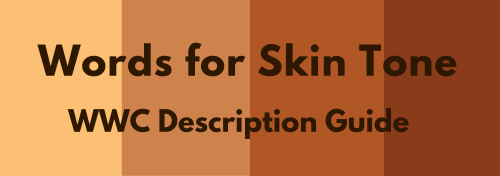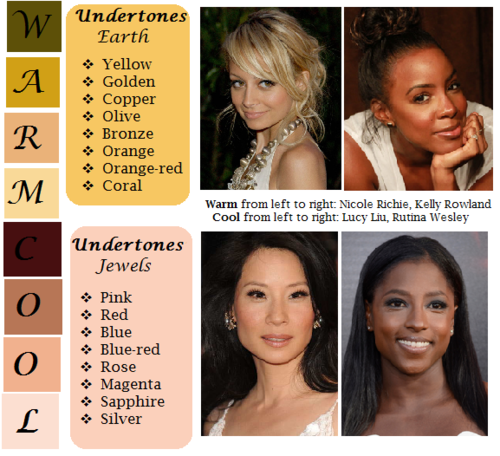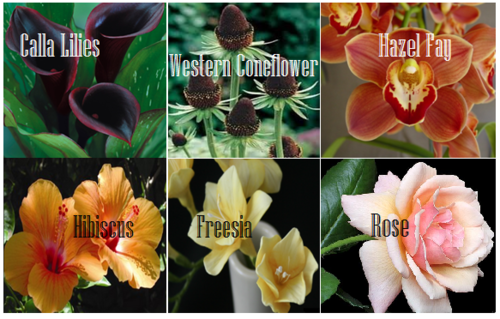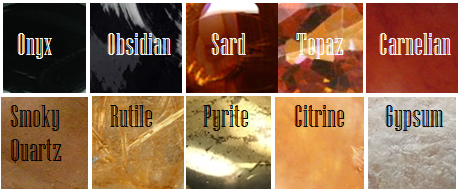The Wet Cat Tree.

The wet cat tree.
More Posts from Violetdawn001 and Others
Any reference for hands is a gift from God.



my recipe for drawing hands!
(small note that this is a shortcut that is more abt style and ease than anatomical accuracy. it helps to take time to really properly study hands, makes it easier to bend the rules a bit like this and have it still look good!!)
(learn rules b4 u break them or whatevah)
Thank you for sharing this. I wish I had this when I first joined.
As for all the newcomers, welcome to a brand new world that has existed for some time. Settle on in, beware the annoying bots, reblog, and above all, DO NOT BE TOXIC! Ain't worth your time.
to those of you who are moving here from tiktok, from someone whos used both tiktok and tumbr for years...
1. DO NOT censor your posts
dont censor sex, abuse, suicide, dont censor it. we dont have censors like tiktok does, you wont be banned for talking about these things and tagging them properly helps people avoid them (also, we dont have shadowbanning here)
2. we dont really have an algorithm
you follow who you follow, and you see posts from who you follow or what you search. the 'for you page' is basically useless here. this also brings me to my next two points
3. dont crosstag
we get it, on tiktok you have to crosstag for reach, but thats not really a thing here. just tag your posts properly (also posters often leave more info about the post in the tags!! and when you reblog stuff you can leave your own notes in the tags, kind of like the old "repost comments" on tiktok)
4. dont expect to go viral/be famous
"viral" isnt really a thing on here (at least not for the average blogger). your posts will probably get 2-10 likes and you wont get nearly as many followers than on tiktok. thats just how tumblr is
5. blocking is your best friend
tiktok is VERY discussion based, and while tumblr is much more discussion based than other social medias, its still not a good place for ragebait/discourse. dont interact, itll make your experience worse in the end, just block and move on
6. you cant go into someone elses house and start rearranging their furniture
this is tumblr, not tiktok. dont diss old tumblr users for how they use the site or try to change them, thats like going into someone elses house and trying to rearrange their furniture. we've been here longer and we're familiar with the site and its culture, either find your niche, adapt, or find a different app
So That's how you beat me...
Training against Pure Vessel in Godhome and the buggo has figured out a way to consistently defeat me.
Sit on me.
As in Slam-Dunk on top of me. Or jump across the area so far that PV gets me after I dash away.
Just as bad as Hornet choosing to run or walk into me. Thanks PV.
Oh this happened to me recently.
I want to write a fanfic about a guy going dancing. Okay, I need a festival. What kind of festival could work with an underground kingdom? Okay, which festival could I pull off? Ooh! This one works well with harvest season-oh! The traditions and-oh now I have more headcanons on how the economics work in the City of Tears-
Wait-what do you mean I haven't finished writing the burb to the story yet, much less the outline?
Writing fics is hilarious- what do you mean I have to Google diagrams of stairs now??
Honestly, I'm wondering the same question. Especially since the Tumblr community seems pretty active and interactive with original posters.
So I'm new to Tumblr and have a question ...
Why don't people comment?
I noticed a lot of people reblog, which I think is a super cool feature, but I'll find a super popular post with zero comments and it's weird. I actually love getting comments and it is odd that no one else seems to. Is it considered rude? I usually comment bc I don't like to reblog on my themed accounts (like my art account) so I'll comment. However, I don't want to come off the wrong way.
Tl;Dr - I'm new to Tumblr and wondering why no one seems to comment on posts, even popular ones.
Thanks for reading!
I want this to be my car someday!

Excuse me while I reblog this for future reference...
Words for Skin Tone | How to Describe Skin Color

We discussed the issues describing People of Color by means of food in Part I of this guide, which brought rise to even more questions, mostly along the lines of “So, if food’s not an option, what can I use?” Well, I was just getting to that!
This final portion focuses on describing skin tone, with photo and passage examples provided throughout. I hope to cover everything from the use of straight-forward description to the more creatively-inclined, keeping in mind the questions we’ve received on this topic.
Standard Description
Basic Colors

Pictured above: Black, Brown, Beige, White, Pink.
“She had brown skin.”
This is a perfectly fine description that, while not providing the most detail, works well and will never become cliché.
Describing characters’ skin as simply brown or beige works on its own, though it’s not particularly telling just from the range in brown alone.
Complex Colors
These are more rarely used words that actually “mean” their color. Some of these have multiple meanings, so you’ll want to look into those to determine what other associations a word might have.

Pictured above: Umber, Sepia, Ochre, Russet, Terra-cotta, Gold, Tawny, Taupe, Khaki, Fawn.
Complex colors work well alone, though often pair well with a basic color in regards to narrowing down shade/tone.
For example: Golden brown, russet brown, tawny beige…
As some of these are on the “rare” side, sliding in a definition of the word within the sentence itself may help readers who are unfamiliar with the term visualize the color without seeking a dictionary.
“He was tall and slim, his skin a russet, reddish-brown.”
Comparisons to familiar colors or visuals are also helpful:
“His skin was an ochre color, much like the mellow-brown light that bathed the forest.”
Modifiers
Modifiers, often adjectives, make partial changes to a word.The following words are descriptors in reference to skin tone.
Dark - Deep - Rich - Cool
Warm - Medium - Tan
Fair - Light - Pale
Rich Black, Dark brown, Warm beige, Pale pink…
If you’re looking to get more specific than “brown,” modifiers narrow down shade further.
Keep in mind that these modifiers are not exactly colors.
As an already brown-skinned person, I get tan from a lot of sun and resultingly become a darker, deeper brown. I turn a pale, more yellow-brown in the winter.
While best used in combination with a color, I suppose words like “tan” “fair” and “light” do work alone; just note that tan is less likely to be taken for “naturally tan” and much more likely a tanned White person.
Calling someone “dark” as description on its own is offensive to some and also ambiguous. (See: Describing Skin as Dark)
Undertones
Undertones are the colors beneath the skin, seeing as skin isn’t just one even color but has more subdued tones within the dominating palette.

pictured above: warm / earth undertones: yellow, golden, copper, olive, bronze, orange, orange-red, coral | cool / jewel undertones: pink, red, blue, blue-red, rose, magenta, sapphire, silver.
Mentioning the undertones within a character’s skin is an even more precise way to denote skin tone.
As shown, there’s a difference between say, brown skin with warm orange-red undertones (Kelly Rowland) and brown skin with cool, jewel undertones (Rutina Wesley).
“A dazzling smile revealed the bronze glow at her cheeks.”
“He always looked as if he’d ran a mile, a constant tinge of pink under his tawny skin.”
Standard Description Passage
“Farah’s skin, always fawn, had burned and freckled under the summer’s sun. Even at the cusp of autumn, an uneven tan clung to her skin like burrs. So unlike the smooth, red-brown ochre of her mother, which the sun had richened to a blessing.”
-From my story “Where Summer Ends” featured in Strange Little Girls
Here the state of skin also gives insight on character.
Note my use of “fawn” in regards to multiple meaning and association. While fawn is a color, it’s also a small, timid deer, which describes this very traumatized character of mine perfectly.
Though I use standard descriptions of skin tone more in my writing, at the same time I’m no stranger to creative descriptions, and do enjoy the occasional artsy detail of a character.
Creative Description
Whether compared to night-cast rivers or day’s first light…I actually enjoy seeing Characters of Colors dressed in artful detail.
I’ve read loads of descriptions in my day of white characters and their “smooth rose-tinged ivory skin”, while the PoC, if there, are reduced to something from a candy bowl or a Starbucks drink, so to actually read of PoC described in lavish detail can be somewhat of a treat.
Still, be mindful when you get creative with your character descriptions. Too many frills can become purple-prose-like, so do what feels right for your writing when and where. Not every character or scene warrants a creative description, either. Especially if they’re not even a secondary character.
Using a combination of color descriptions from standard to creative is probably a better method than straight creative. But again, do what’s good for your tale.
Natural Settings - Sky

Pictured above: Harvest Moon -Twilight, Fall/Autumn Leaves, Clay, Desert/Sahara, Sunlight - Sunrise - Sunset - Afterglow - Dawn- Day- Daybreak, Field - Prairie - Wheat, Mountain/Cliff, Beach/Sand/Straw/Hay.
Now before you run off to compare your heroine’s skin to the harvest moon or a cliff side, think about the associations to your words.
When I think cliff, I think of jagged, perilous, rough. I hear sand and picture grainy, yet smooth. Calm. mellow.
So consider your character and what you see fit to compare them to.
Also consider whose perspective you’re describing them from. Someone describing a person they revere or admire may have a more pleasant, loftier description than someone who can’t stand the person.
“Her face was like the fire-gold glow of dawn, lifting my gaze, drawing me in.”
“She had a sandy complexion, smooth and tawny.”
Even creative descriptions tend to draw help from your standard words.
Flowers

Pictured above: Calla lilies, Western Coneflower, Hazel Fay, Hibiscus, Freesia, Rose
It was a bit difficult to find flowers to my liking that didn’t have a 20 character name or wasn’t called something like “chocolate silk” so these are the finalists.
You’ll definitely want to avoid purple-prose here.
Also be aware of flowers that most might’ve never heard of. Roses are easy, as most know the look and coloring(s) of this plant. But Western coneflowers? Calla lilies? Maybe not so much.
“He entered the cottage in a huff, cheeks a blushing brown like the flowers Nana planted right under my window. Hazel Fay she called them, was it?”
Assorted Plants & Nature

Pictured above: Cattails, Seashell, Driftwood, Pinecone, Acorn, Amber
These ones are kinda odd. Perhaps because I’ve never seen these in comparison to skin tone, With the exception of amber.
At least they’re common enough that most may have an idea what you’re talking about at the mention of “pinecone.“
I suggest reading out your sentences aloud to get a better feel of how it’ll sounds.
"Auburn hair swept past pointed ears, set around a face like an acorn both in shape and shade.”
I pictured some tree-dwelling being or person from a fantasy world in this example, which makes the comparison more appropriate.
I don’t suggest using a comparison just “cuz you can” but actually being thoughtful about what you’re comparing your character to and how it applies to your character and/or setting.
Wood

Pictured above: Mahogany, Walnut, Chestnut, Golden Oak, Ash
Wood can be an iffy description for skin tone. Not only due to several of them having “foody” terminology within their names, but again, associations.
Some people would prefer not to compare/be compared to wood at all, so get opinions, try it aloud, and make sure it’s appropriate to the character if you do use it.
“The old warlock’s skin was a deep shade of mahogany, his stare serious and firm as it held mine.”
Metals

Pictured above: Platinum, Copper, Brass, Gold, Bronze
Copper skin, brass-colored skin, golden skin…
I’ve even heard variations of these used before by comparison to an object of the same properties/coloring, such as penny for copper.
These also work well with modifiers.
“The dress of fine white silks popped against the deep bronze of her skin.”
Gemstones - Minerals

Pictured above: Onyx, Obsidian, Sard, Topaz, Carnelian, Smoky Quartz, Rutile, Pyrite, Citrine, Gypsum
These are trickier to use. As with some complex colors, the writer will have to get us to understand what most of these look like.
If you use these, or any more rare description, consider if it actually “fits” the book or scene.
Even if you’re able to get us to picture what “rutile” looks like, why are you using this description as opposed to something else? Have that answer for yourself.
“His skin reminded her of the topaz ring her father wore at his finger, a gleaming stone of brown, mellow facades.”
Physical Description
Physical character description can be more than skin tone.
Show us hair, eyes, noses, mouth, hands…body posture, body shape, skin texture… though not necessarily all of those nor at once.
Describing features also helps indicate race, especially if your character has some traits common within the race they are, such as afro hair to a Black character.
How comprehensive you decide to get is up to you. I wouldn’t overdo it and get specific to every mole and birthmark. Noting defining characteristics is good, though, like slightly spaced front teeth, curls that stay flopping in their face, hands freckled with sunspots…
General Tips
Indicate Race Early: I suggest indicators of race be made at the earliest convenience within the writing, with more hints threaded throughout here and there.
Get Creative On Your Own: Obviously, I couldn’t cover every proper color or comparison in which has been “approved” to use for your characters’ skin color, so it’s up to you to use discretion when seeking other ways and shades to describe skin tone.
Skin Color May Not Be Enough: Describing skin tone isn’t always enough to indicate someone’s ethnicity. As timeless cases with readers equating brown to “dark white” or something, more indicators of race may be needed.
Describe White characters and PoC Alike: You should describe the race and/or skin tone of your white characters just as you do your Characters of Color. If you don’t, you risk implying that White is the default human being and PoC are the “Other”).
PSA: Don’t use “Colored.” Based on some asks we’ve received using this word, I’d like to say that unless you or your character is a racist grandmama from the 1960s, do not call People of Color “colored” please.
Not Sure Where to Start? You really can’t go wrong using basic colors for your skin descriptions. It’s actually what many people prefer and works best for most writing. Personally, I tend to describe my characters using a combo of basic colors + modifiers, with mentions of undertones at times. I do like to veer into more creative descriptions on occasion.
Want some alternatives to “skin” or “skin color”? Try: Appearance, blend, blush, cast, coloring, complexion, flush, glow, hue, overtone, palette, pigmentation, rinse, shade, sheen, spectrum, tinge, tint, tone, undertone, value, wash.
Skin Tone Resources
List of Color Names
The Color Thesaurus
Skin Undertone & Color Matching
Tips and Words on Describing Skin
Photos: Undertones Described (Modifiers included)
Online Thesaurus (try colors, such as “red” & “brown”)
Don’t Call me Pastries: Creative Skin Tones w/ pics I
Writing & Description Guides
WWC Featured Description Posts
WWC Guide: Words to Describe Hair
Writing with Color: Description & Skin Color Tags
7 Offensive Mistakes Well-intentioned Writers Make
I tried to be as comprehensive as possible with this guide, but if you have a question regarding describing skin color that hasn’t been answered within part I or II of this guide, or have more questions after reading this post, feel free to ask!
~ Mod Colette
This is now my head canon and you can't stop me.

My sisters and I call this the princess tram because it takes passengers to Deepnest- Basin- Hive, all the places Hornet would have been raised. We headcanon the king had it constructed specifically for her transportation.
You can say that again Buddy! Humans are so crazy unique that it's not even funny!
I want to tell a story to the artists and would-be artists out there.
When I was 19, I made a large oil painting of the nerd I would eventually marry. I poured all my attention and care into this painting. It's the only art I have from back then that still holds up as a work I'm proud of today.
I entered it into a judged show at the local art center. It got an honorable mention. I went to see the show with my beloved model. One of the judges came up to talk to me, and highlighted that all the judges really liked the painting. It would have placed, except, you see, the feet were incorrect. They were too wide and short, and if I just studied a bit more anatomy-
I called over my future wife, and asked her to take off her shoe. Being already very used to humoring me, she did. The judge looked at her very short, very wide little foot. Exactly as I'd lovingly rendered it. I would never edit her appearance in any way.
The judge looked me in the eye, and to his credit, he really looked like he meant it when he said "Oh I'm so sorry."
Anyways the moral of the story is that all of those anatomy books that teach you proportions are either showing you averages, or a very specific idea of an idealized body. Actual bodies are much more varied than that.
So don't forget to draw from observation, and remember that humans aren't mass produced mannequins. Delight in our variation. Because it's supposed to be there.
These Eeveeulations are so cute!!!!


-
 whiteredeyes34 reblogged this · 1 month ago
whiteredeyes34 reblogged this · 1 month ago -
 hdrnfsh liked this · 2 months ago
hdrnfsh liked this · 2 months ago -
 daisyrings-and-rainclouds reblogged this · 2 months ago
daisyrings-and-rainclouds reblogged this · 2 months ago -
 liliths-games reblogged this · 2 months ago
liliths-games reblogged this · 2 months ago -
 parasolladyansy liked this · 2 months ago
parasolladyansy liked this · 2 months ago -
 lovelylunasnow liked this · 2 months ago
lovelylunasnow liked this · 2 months ago -
 bellthebee liked this · 2 months ago
bellthebee liked this · 2 months ago -
 dragon-boy-gills reblogged this · 2 months ago
dragon-boy-gills reblogged this · 2 months ago -
 thecodeserror reblogged this · 2 months ago
thecodeserror reblogged this · 2 months ago -
 thecodeserror liked this · 2 months ago
thecodeserror liked this · 2 months ago -
 natawie reblogged this · 2 months ago
natawie reblogged this · 2 months ago -
 antarctic-arcanine liked this · 2 months ago
antarctic-arcanine liked this · 2 months ago -
 elkpoint reblogged this · 2 months ago
elkpoint reblogged this · 2 months ago -
 trist246 reblogged this · 2 months ago
trist246 reblogged this · 2 months ago -
 rukyderg liked this · 2 months ago
rukyderg liked this · 2 months ago -
 hellaciousace liked this · 2 months ago
hellaciousace liked this · 2 months ago -
 clairesable liked this · 2 months ago
clairesable liked this · 2 months ago -
 brandnewbuanny reblogged this · 2 months ago
brandnewbuanny reblogged this · 2 months ago -
 mossfox-art liked this · 2 months ago
mossfox-art liked this · 2 months ago -
 bat-fish-crazy reblogged this · 2 months ago
bat-fish-crazy reblogged this · 2 months ago -
 bat-fish-crazy liked this · 2 months ago
bat-fish-crazy liked this · 2 months ago -
 starryrika liked this · 2 months ago
starryrika liked this · 2 months ago -
 anonman-reblogs reblogged this · 2 months ago
anonman-reblogs reblogged this · 2 months ago -
 anonman-2 liked this · 2 months ago
anonman-2 liked this · 2 months ago -
 seawitchmagick98 liked this · 2 months ago
seawitchmagick98 liked this · 2 months ago -
 mayadeb reblogged this · 2 months ago
mayadeb reblogged this · 2 months ago -
 mayadeb liked this · 2 months ago
mayadeb liked this · 2 months ago -
 pokeashhhh reblogged this · 2 months ago
pokeashhhh reblogged this · 2 months ago -
 pokeashhhh liked this · 2 months ago
pokeashhhh liked this · 2 months ago -
 ac3jester reblogged this · 2 months ago
ac3jester reblogged this · 2 months ago -
 ac3jester liked this · 2 months ago
ac3jester liked this · 2 months ago -
 one-true-houselight liked this · 2 months ago
one-true-houselight liked this · 2 months ago -
 athgalla reblogged this · 2 months ago
athgalla reblogged this · 2 months ago -
 saiyanqueenreads reblogged this · 2 months ago
saiyanqueenreads reblogged this · 2 months ago -
 theghostowl liked this · 2 months ago
theghostowl liked this · 2 months ago -
 dreamieclouds liked this · 2 months ago
dreamieclouds liked this · 2 months ago -
 apocalypsehunter reblogged this · 2 months ago
apocalypsehunter reblogged this · 2 months ago -
 edelfliss liked this · 3 months ago
edelfliss liked this · 3 months ago -
 vivy-nx liked this · 3 months ago
vivy-nx liked this · 3 months ago -
 sturbi-made-ofconfetti liked this · 4 months ago
sturbi-made-ofconfetti liked this · 4 months ago -
 sturbi-made-ofconfetti reblogged this · 4 months ago
sturbi-made-ofconfetti reblogged this · 4 months ago -
 sqweanky liked this · 4 months ago
sqweanky liked this · 4 months ago -
 sqweanky reblogged this · 4 months ago
sqweanky reblogged this · 4 months ago -
 eliluminado7 reblogged this · 4 months ago
eliluminado7 reblogged this · 4 months ago -
 coxinha-brasileira liked this · 4 months ago
coxinha-brasileira liked this · 4 months ago -
 problematicaberration reblogged this · 4 months ago
problematicaberration reblogged this · 4 months ago -
 problematicaberration liked this · 4 months ago
problematicaberration liked this · 4 months ago -
 greencuppa liked this · 5 months ago
greencuppa liked this · 5 months ago -
 applesaturn liked this · 5 months ago
applesaturn liked this · 5 months ago
